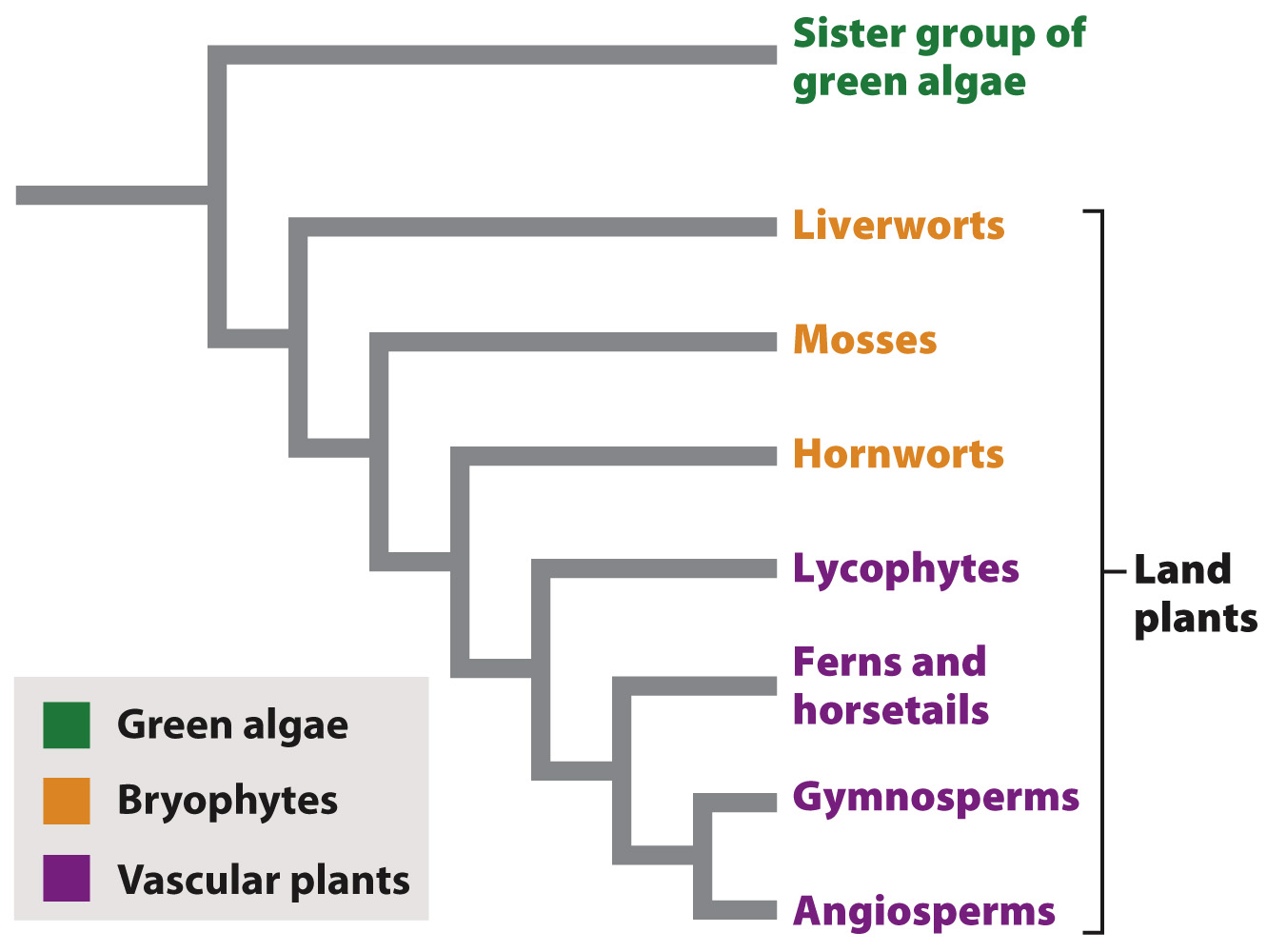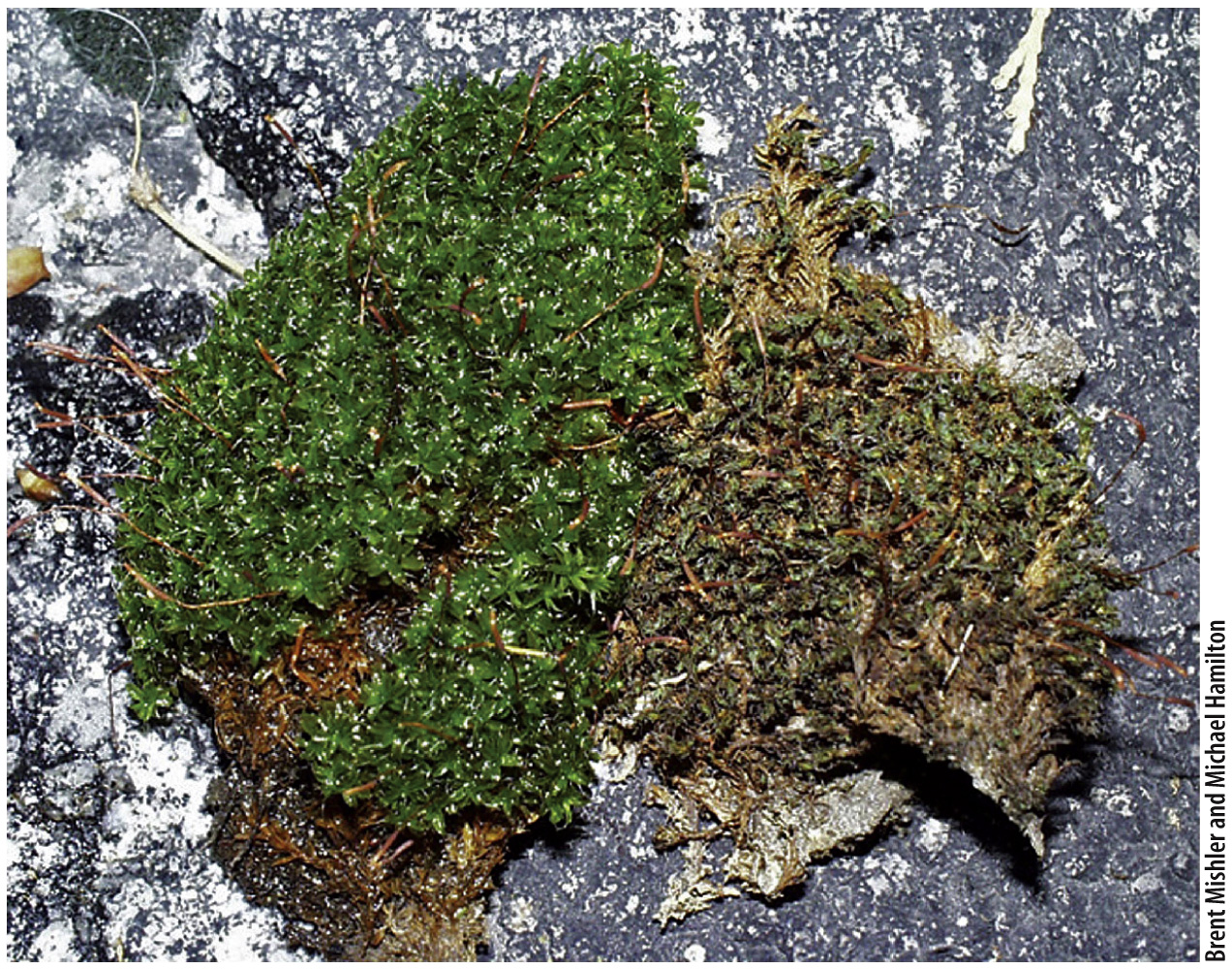Land plants are a monophyletic group that includes vascular plants and bryophytes.

Fig. 29.1 shows that all land plants are descended from green algae; thus, land plants form a monophyletic group because they include all (and only) the descendants of a common ancestor. Land plants can be divided into two types: vascular plants, which can pull water from the soil, and bryophytes, which cannot. The first plant groups to diverge are bryophytes—
More than 95% of all land plant species found today are vascular plants, and they provide almost all the photosynthetic output of terrestrial environments. The phylogenetic tree shows that vascular plants form a monophyletic group, with four main subgroups. Lycophytes and ferns and horsetails are mostly small plants, although these groups once included tall trees. The gymnosperms include pine trees and other conifers, and the angiosperms, or flowering plants, include oak trees, grasses, and sunflowers.
The evolution of vascular plants was a game-
All cells require a high degree of hydration to function. As bryophytes dry out, they lose the ability to carry out photosynthesis. However, many bryophytes exhibit desiccation tolerance, a suite of biochemical traits that allows their cells to survive extreme dehydration without damage to membranes or macromolecules (Fig. 29.2). Bryophytes can then resume photosynthesis when surface water is once again available. In contrast to bryophytes, vascular plants keep their photosynthetic cells hydrated with water drawn from the soil. As a result, vascular plants can photosynthesize even when the surface of the soil is dry.

Bryophytes provide insights into how the first plants may have met the challenge of carrying out photosynthesis on land. The ability to survive desiccation is likely to have been critical. But we must avoid the temptation to think of living bryophytes as representative of the ancestral state of all land plants. The diversity of bryophytes that we encounter today has been shaped by their long coexistence with vascular plants. Indeed, bryophytes thrive in the shady, moist understory of forests, but only in places where roots would not provide a significant advantage—
601
We return to bryophytes when we examine plant reproduction (Chapter 30) and diversity (Chapter 33). For now, however, let’s focus on the vascular plants.